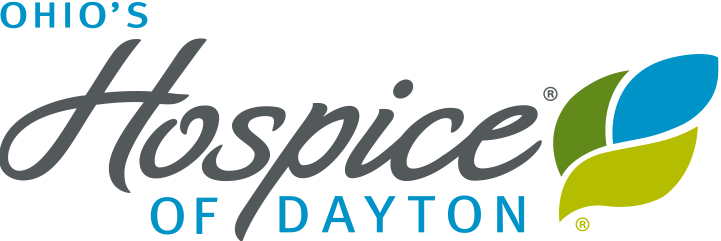Ohio’s Hospice of Dayton invites the community to remember and celebrate their loved ones at…

Star Gazing Eases Anxiety
Kathleen Emerson, LPN, CHPLN
Imagine lying back in your recliner on a warm summer evening looking up at a beautiful night sky filled with stars and soft puffy clouds. The galaxy with its pinpoints of brilliance is immense before you. Imagine the peacefulness and comfort this brings to you. Hospice of Dayton is engaged in research with Laser Star Projectors to provide a non-pharmacological solution to anxiety and agitation often experienced by patients at while nearing their life’s journey.
 The Laser Star Projectors are part of the ongoing expansion of complementary innovative medical approaches provided by Hospice of Dayton. They are used as adjuncts to conventional medicine. Our program started with one projector. Response from patients and families was so positive the use of the star projector caught on quickly. Soon we had patients and family members requesting the projector for their room. We had one patient, who was experiencing extreme terminal agitation. No amount of medication, soft lights, quiet music or peaceful room helped this patient experience peace and relaxation. We took the projector into his room, turned the lights down and the star projector on. Immediately, the scene playing out on his ceiling entranced the patient. He laid there quietly, watching the stars and clouds, until he dozed off to sleep. This became a daily ritual for this patient, affording him the peace and rest he needed. After he slipped into a non-responsive state, his wife would frequently request the star machine, stating it helped her to relax while she sat with her husband. After his passing, his family donated five star machines to the unit. More donations followed as families found their loved ones benefited with less anxiety and agitation. Use of the equipment is being expanded to address the needs of patients in home care and extended living facilities. We are now engaged in several research projects in collaboration with Miami Valley Hospital and Children’s Medical Center of Dayton to document and track the effectiveness of light therapy in a variety of care settings.
The Laser Star Projectors are part of the ongoing expansion of complementary innovative medical approaches provided by Hospice of Dayton. They are used as adjuncts to conventional medicine. Our program started with one projector. Response from patients and families was so positive the use of the star projector caught on quickly. Soon we had patients and family members requesting the projector for their room. We had one patient, who was experiencing extreme terminal agitation. No amount of medication, soft lights, quiet music or peaceful room helped this patient experience peace and relaxation. We took the projector into his room, turned the lights down and the star projector on. Immediately, the scene playing out on his ceiling entranced the patient. He laid there quietly, watching the stars and clouds, until he dozed off to sleep. This became a daily ritual for this patient, affording him the peace and rest he needed. After he slipped into a non-responsive state, his wife would frequently request the star machine, stating it helped her to relax while she sat with her husband. After his passing, his family donated five star machines to the unit. More donations followed as families found their loved ones benefited with less anxiety and agitation. Use of the equipment is being expanded to address the needs of patients in home care and extended living facilities. We are now engaged in several research projects in collaboration with Miami Valley Hospital and Children’s Medical Center of Dayton to document and track the effectiveness of light therapy in a variety of care settings.



